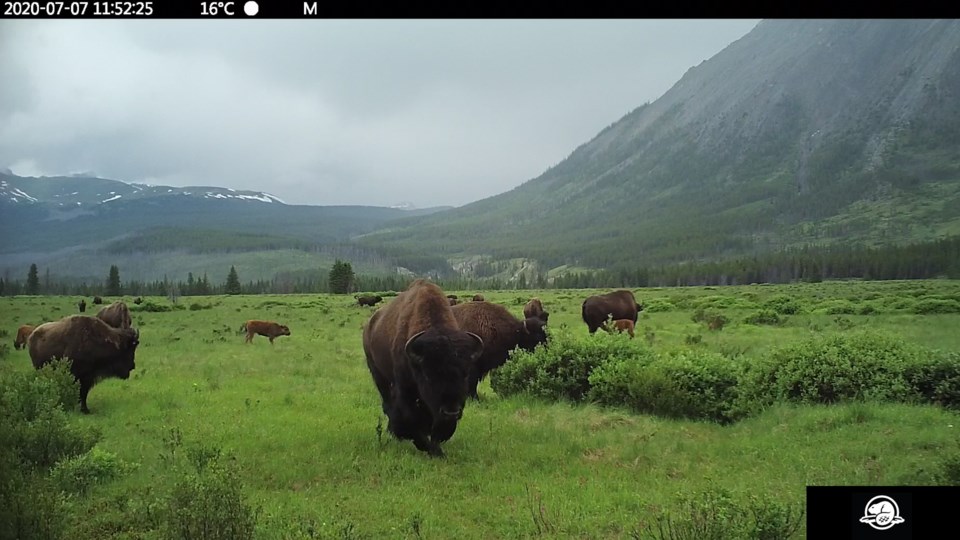BANFF – Parks Canada has shot and killed a young bison that wandered out of Banff National Park onto Alberta provincial lands.
The three-and-a-half-year-old bull had travelled about nine kilometres outside the park into the Clearwater area, which sees high human use with numerous trails and camping areas, prompting Parks Canada to destroy the animal on Aug. 5.
Parks Canada officials say the five-year reintroduction pilot project makes a commitment to the province of Alberta and private landowners to respond swiftly if bison go onto provincial lands.
“This was a difficult decision, but public safety is our No. 1 concern,” said Dwight Bourdin, acting resource conservation manager for Banff National Park.
“The herd is still strong and healthy. We still have 65 bison in the park, and I believe we had about 13 calves this year, so the population is still doing well.”
For the most part, the bison herd stays within the large 1,200-square-kilometre reintroduction zone, which is fenced off in strategic locations to keep the animals from heading out onto Alberta provincial lands.
However, one other wandering bull was destroyed and two others relocated after making their way outside the national park boundary.
In this most recent case, Bourdin said the young male bison had encountered people, sparking concerns for public safety.
“We also had a couple of different reports of him entering some different camps that had horses and he was very curious,” he said.
“The assumption is he was pushed out by maybe some of the larger bulls because the rut is ongoing.”
Parks Canada decided against capturing and returning this animal to the park for many reasons.
Bourdin said the remote location and the logistics of safely and humanely capturing and moving such a large animal under extremely hot weather conditions were considerations.
In addition, he said it was also unlikely a translocation would be successful in the long-term given the animal’s age, sex, and the fact that the bison rut is ongoing.
“We did consider it because we did do that successfully in 2018-19, but just the location without having road access and his behaviour, the decision was to humanely put him down,” Bourdin said.
“We did do helicopter searching, but trying to move him would have been very challenging.”
Bison, which are considered a keystone species that help hold an ecosystem together, were absent from Banff National Park for about 160 years before being brought back as part of a $6.4 million reintroduction project.
Parks Canada translocated 16 plains bison – 10 young females and six young males – from a disease-free herd in Elk Island National Park, east of Edmonton, to a 16-hectare soft-release fenced pasture in the Panther River Valley on Feb. 1, 2017.
For the first 16 months, bison were held in the fenced area in an attempt to anchor them to their new home before their release into the greater 1,200-square-kilometre reintroduction zone in the remote eastern slopes of Banff in summer 2018.
Read more from RMOToday.com




